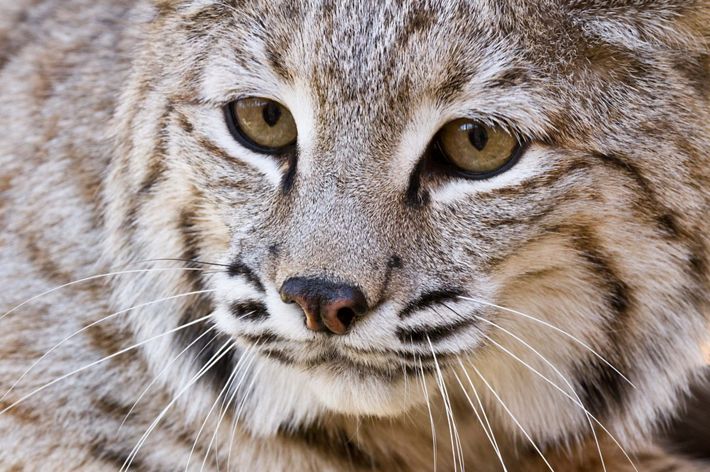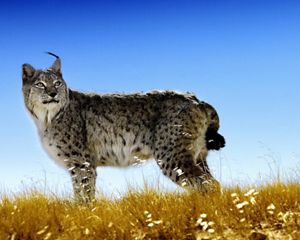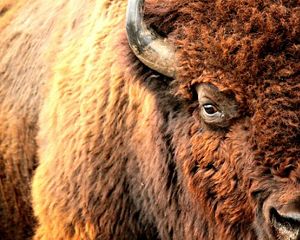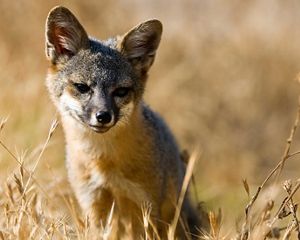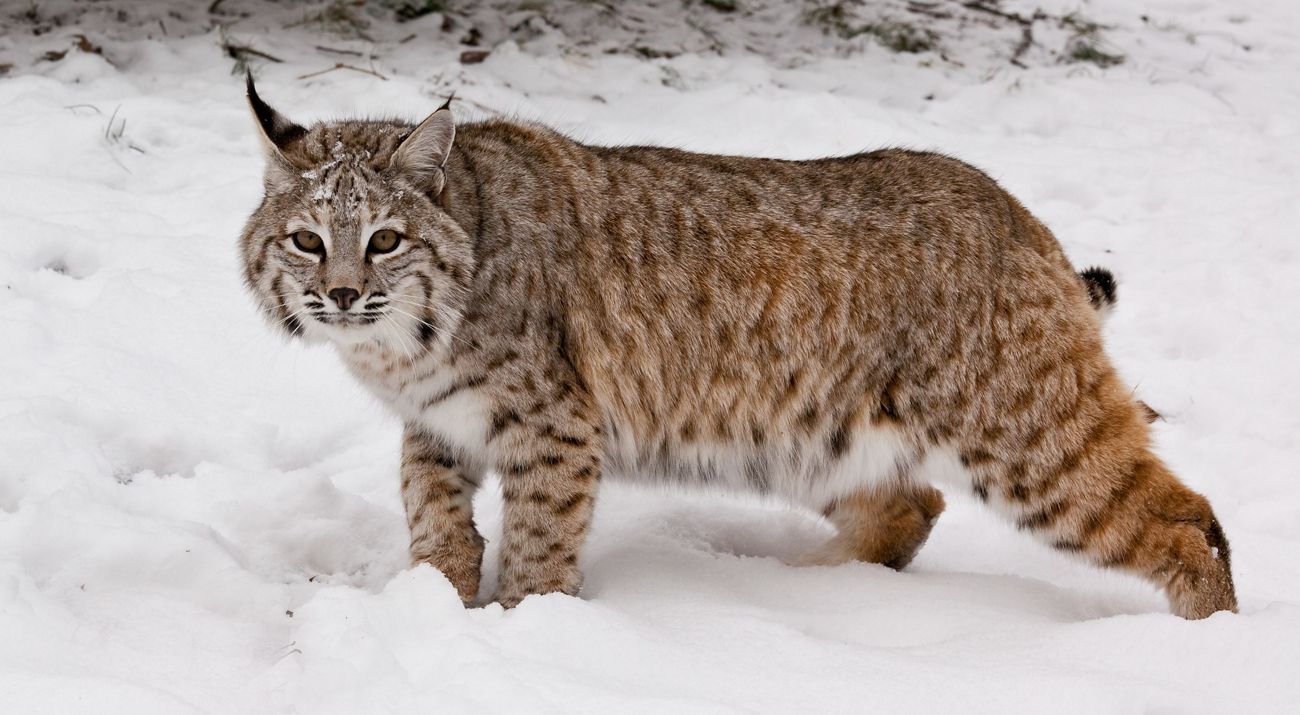
Bobcat
Despite its striking resemblance to the household cat, the bobcat is a fierce predator that ranges throughout North America.

Bobcat Fast Facts
Common name: Bobcat
Scientific name: Lynx rufus
Conservation status: Least Concern
Lifespan: 7 years
Weight: 20 pounds
Meet the Bobcat
The most common wildcat in North America is the bobcat, so named because of its short black, white-tipped tail. The bobcat can weigh up to 20 pounds, reach nearly 2 feet in length, and stand 2 to 3.5 feet high.
Despite its striking resemblance to the household cat, the bobcat is a fierce predator. Preferring rabbits to anything else, it will also prey on rodents, birds, raccoons, foxes and even adult deer and domestic cats on occasion.
The bobcat and the lynx have very similar markings. The easiest way to tell them apart is by size - the lynx being much larger than the bobcat.
The North American bobcat lives in a variety of habitats, from the forests of New Jersey to its preferred habitat in the brush on the arid mountainsides of California. Bobcats typically stay away from metropolitan areas, but if a ranch or farm lies within their territory, they will likely try to take advantage of farm animals for food.
Bobcats have adapted well across various neighborhoods in Florida. They prefer deep forests for their thick patches and dense shrubs but are easily adaptable to swamps, rural, urban and suburban areas.
Protecting Bobcats
How TNC is helping communities protect the bobcat:
-
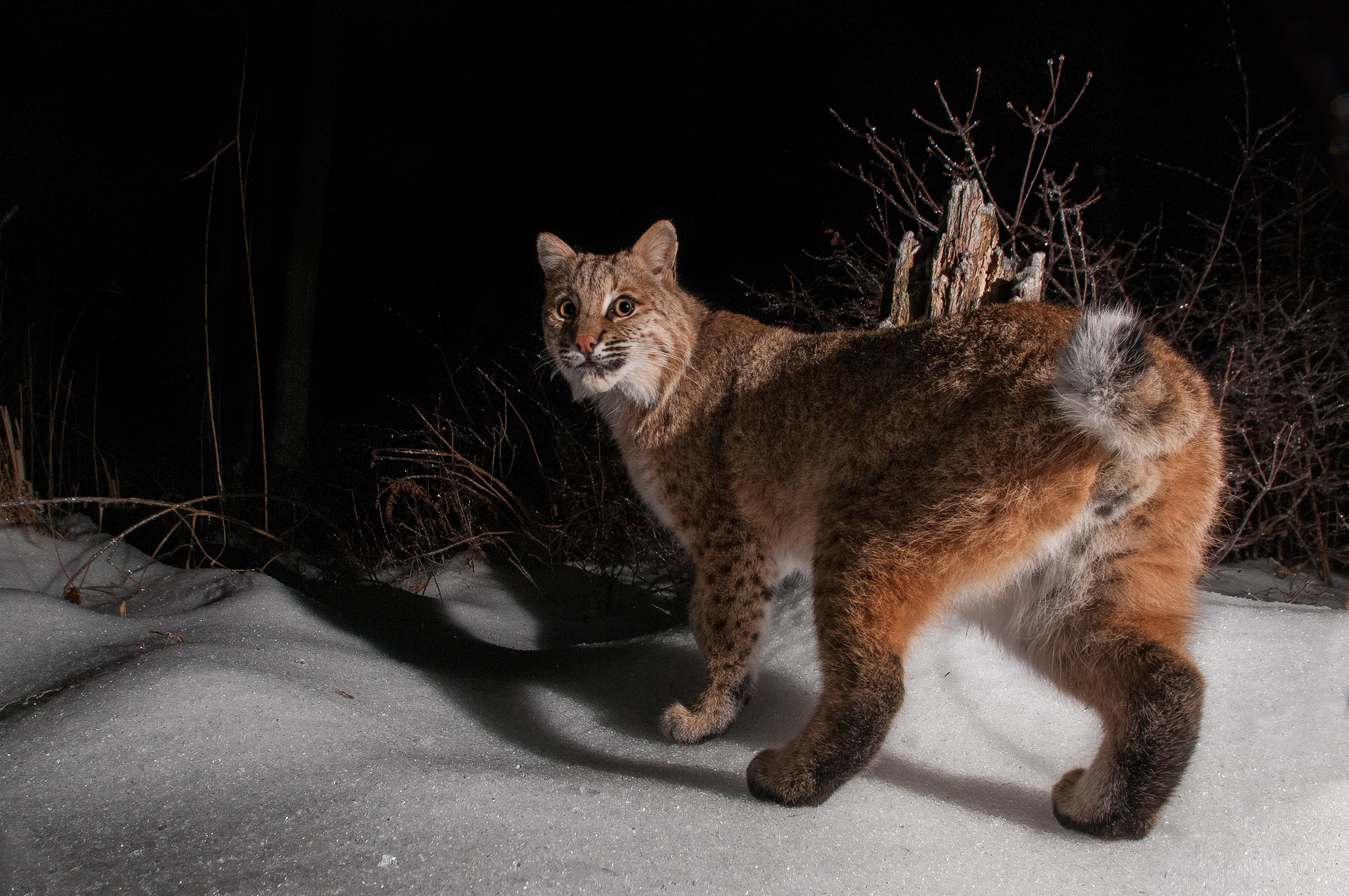
New Jersey
In New Jersey, where the bobcat was once nearly extinct, TNC is working to conserve a corridor of connected lands—Bobcat Alley— to benefit the species’ population. Read more.
-
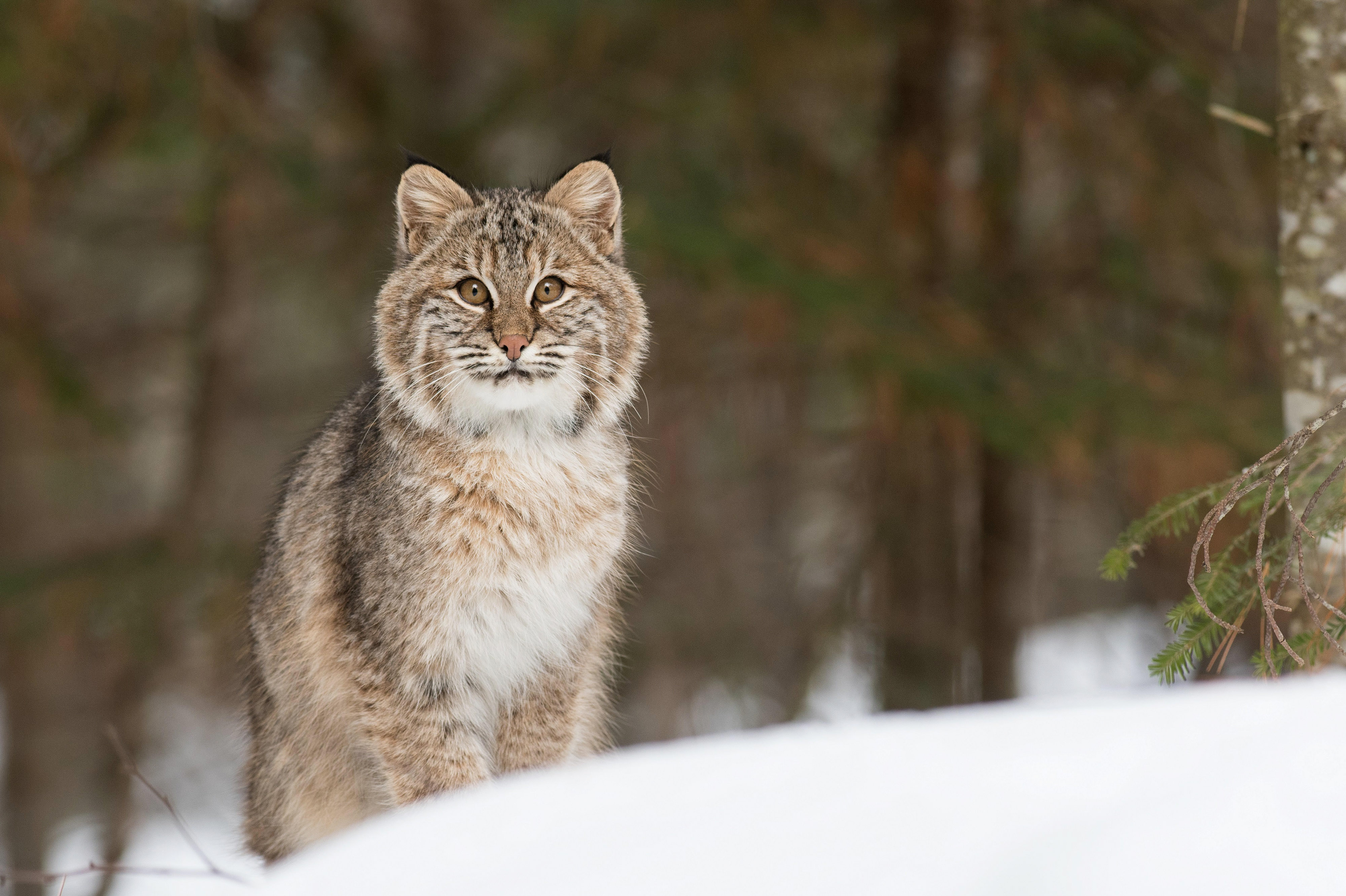
Massachusetts
TNC in Massachusetts is leading an effort to assess and map culverts under the Interstate 90 to identify those that can serve as corridors for wildlife to pass under the road. Read more.
-
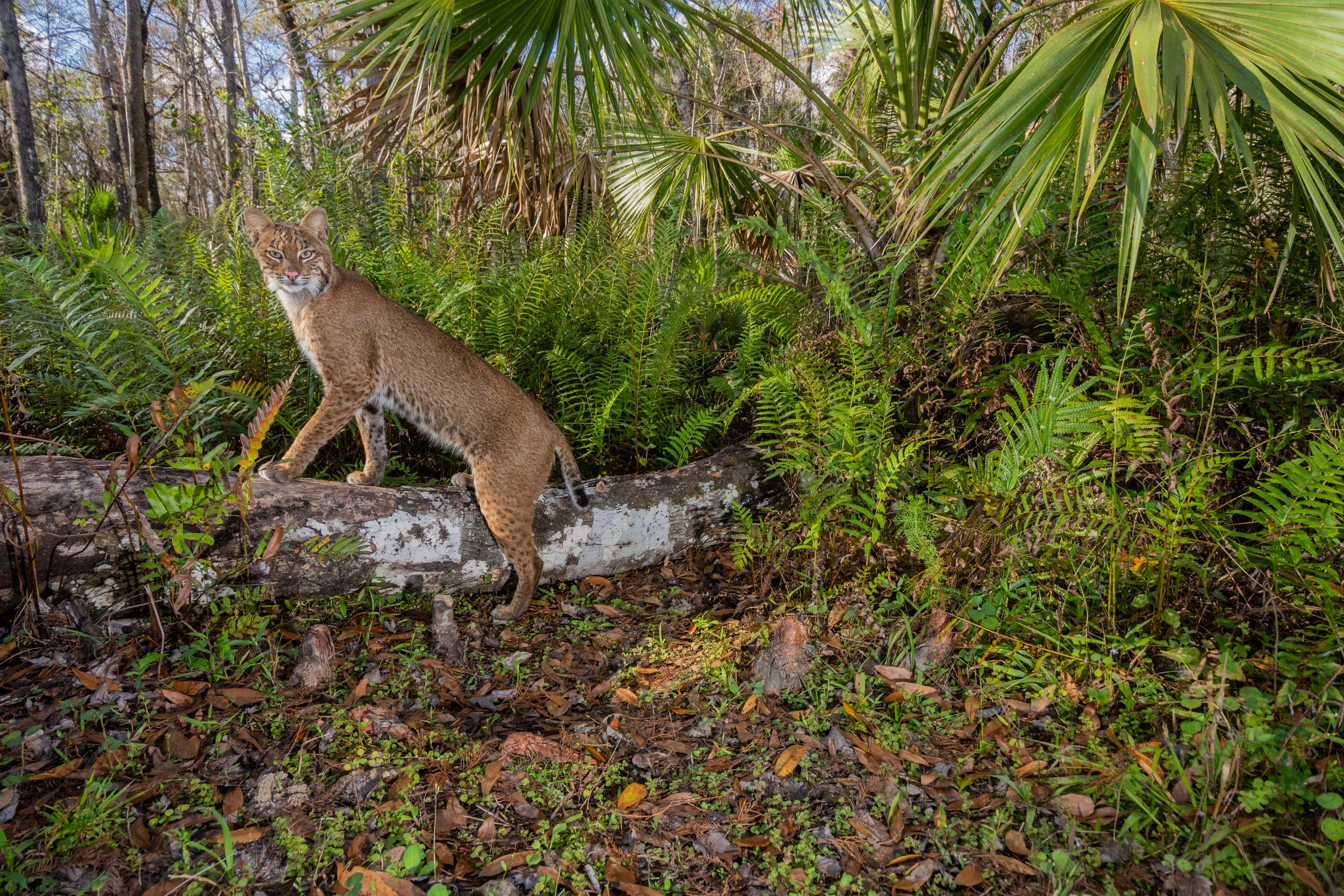
Florida
In Florida, TNC partnered with Big Cat Rescue to release bobcats into the Tiger Creek Preserve.
